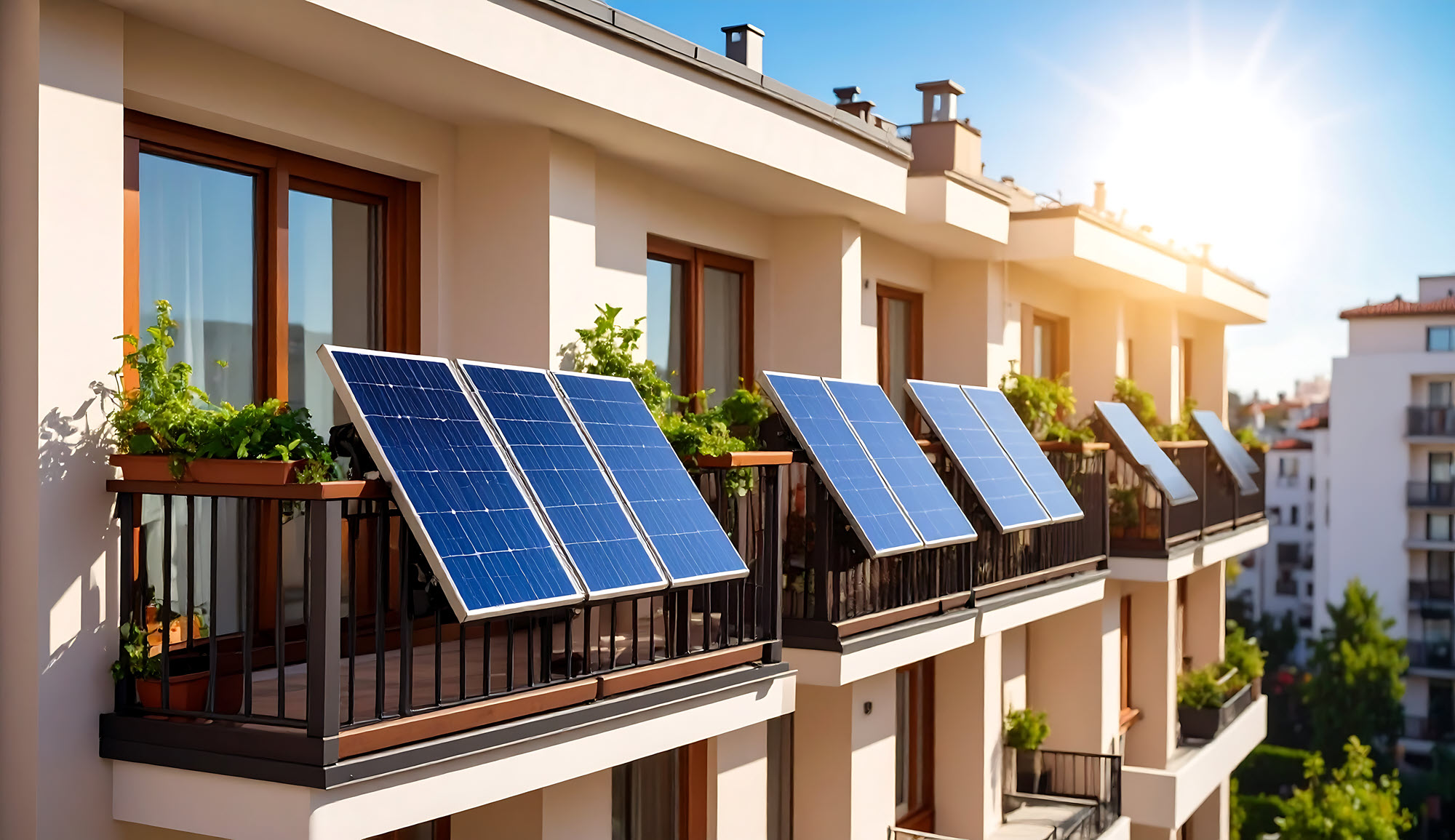 As cities continue to expand and become more densely populated, available space for traditional solar panel installations is shrinking. While many people associate solar energy with rooftop systems, balconies offer a promising alternative. In areas where roof space is limited, balcony solar is emerging as a practical, space-efficient solution (Solar Power World, 2023).
As cities continue to expand and become more densely populated, available space for traditional solar panel installations is shrinking. While many people associate solar energy with rooftop systems, balconies offer a promising alternative. In areas where roof space is limited, balcony solar is emerging as a practical, space-efficient solution (Solar Power World, 2023).
What Is Balcony Solar?
Photovoltaic (PV) systems installed on balconies, windows, or building walls. Rather than relying on large, flat rooftops, these systems utilize underused vertical spaces. Typically compact, they are designed for easy installation in tight urban environments. This makes balcony solar viable for high-rise apartments, multi-story commercial properties, and other buildings where traditional rooftop systems are not an option (EnergySage, 2025).
Why Is Balcony Solar Gaining Popularity?
Ideal for Urban Spaces
Modern cities are growing taller rather than wider, leaving little available rooftop space. This offers a way to harness renewable energy without requiring extensive structural changes, making it a good fit for high-density areas.
Simple and Cost-Effective
Compared to conventional solar systems, balcony solar installations are generally smaller, faster to install, and more affordable. Many are “plug-and-play” systems that require minimal specialized labor or tools (Tech Xplore, 2024).
Supporting Sustainability Goals
Urban areas are actively seeking ways to meet sustainability targets. It empowers residents to generate their own electricity, reduce reliance on the grid, and lower energy costs. Rising electricity prices make this an increasingly attractive option for city dwellers (EnergySage, 2025).
How Does Balcony Solar Work?
Solar panels convert sunlight into electricity. An inverter then transforms direct current (DC) into alternating current (AC) for household or business use. The main advantage of balcony systems lies in their modularity; they can be scaled and angled to optimize sunlight exposure and meet specific energy needs (OilPrice.com, 2023).
Why Should Solar Businesses Pay Attention?
- Opens new opportunities for the solar industry:
- Access to untapped markets such as apartments, office buildings, and commercial high-rises.
- Faster installations that increase project turnover and revenue potential.
- Appeal to renters and tenants who cannot modify rooftops but still want renewable energy access.
- Integration into green building projects to help developers meet sustainability certifications.
Challenges to Consider
- Despite its advantages, balcony solar faces certain limitations:
- Shading and orientation can significantly affect output.
- Local regulations may restrict installations, especially in historic districts.
- Aesthetic concerns require addressing design preferences with property owners.
The Future of Balcony Solar
As urban density increases, the need for innovative renewable energy solutions will continue to grow. Balcony systems offers a cost-effective, flexible option for generating clean power in spaces where rooftop systems are impractical. For solar companies, this represents a chance to expand into a new and growing market by providing solutions tailored to urban living.
References
EnergySage. (2025). https://www.energysage.com/solar/solar-panels-work/
Oil Price.com. https://oilprice.com/Energy/Energy-General/The-Rise-of-Balcony-Solar-Power.html
Tech Xplore. (2025). https://techxplore.com/news/2025-01-germans-balcony-solar-panels-money.html
